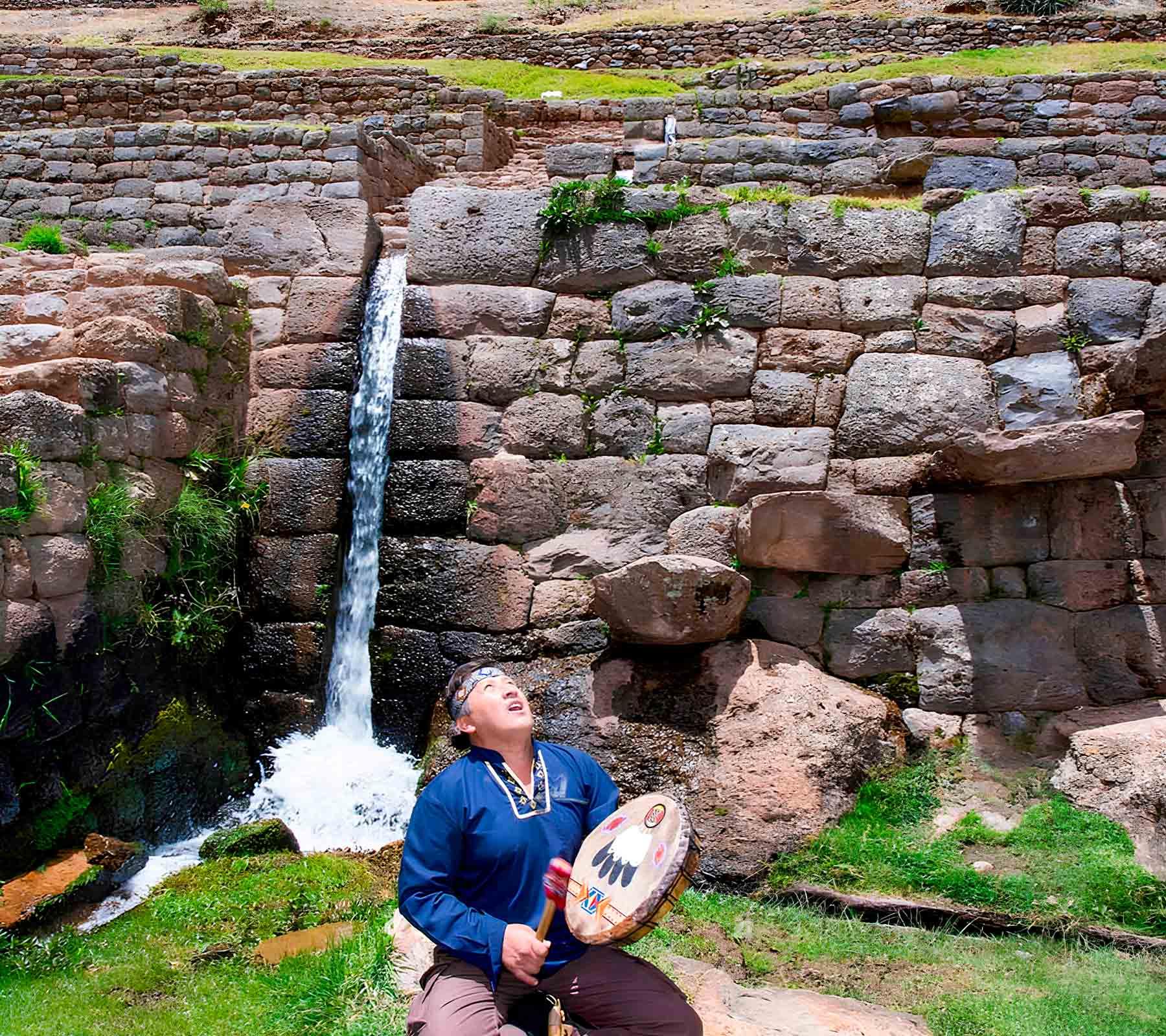Tipon is an archaeological site that exemplifies the advanced hydraulic engineering of the Inca civilization. This marvel of ancient engineering, thought to have been a royal estate for Inca nobility, is now recognized as a masterpiece of water management and agricultural ingenuity, reflecting the deep connection the Incas had with their environment.
The terraces at Tipon are a remarkable example of Incan agricultural technology, designed for experimenting with crops at different altitudes and optimizing agricultural production. The precise engineering of its water management system, designed to control the flow of water throughout the terraces for irrigation purposes, demonstrates the Incas' deep understanding of their environment and their ability to manipulate it to suit their needs.
Beyond its practical applications, Tipon is also thought to hold spiritual significance, with water playing a central role in Inca religious practices. The flowing water through the site's channels and fountains symbolized life and renewal, and Tipon may have been a place for rituals and ceremonies dedicated to water worship.
The Water Gardens of Tipon
At the heart of Tipon lies an intricate network of aqueducts, canals, and fountains, all meticulously engineered to harness the natural flow of water from the surrounding mountains. These structures not only provided irrigation for the terraced fields, which cascade down the hillside in geometric precision, but they also created a serene landscape that was both aesthetically pleasing and spiritually significant.
Agricultural Innovation
The terraces at Tipon, much like those at Moray, were likely used for agricultural experimentation. The Incas were adept at cultivating a wide variety of crops, adapting them to grow in the diverse climates of their vast empire. Tipon’s terraces provided the perfect laboratory for testing different agricultural techniques and crop varieties, contributing to the sustainability and success of the Inca civilization.
Spiritual Significance
Beyond its practical applications, the water flowing through Tipon also held deep spiritual meaning for the Incas. Water was revered as a source of life and a sacred element, and the careful design of the water features at Tipon was undoubtedly imbued with religious significance. The site likely served as a place of worship and ceremony, where the Incas could connect with the natural forces that sustained their empire.
A Testament to Inca Engineering
Today, Tipon stands as a testament to the ingenuity and sophistication of Inca engineering. The precision with which the water systems were constructed, allowing them to function seamlessly centuries later, is a remarkable achievement. Visitors to the site can wander among the terraces, channels, and fountains, marveling at the skill with which the Incas mastered their environment.
Legacy and Preservation
Recognized for its historical and cultural significance, Tipon has been included in Peru’s national heritage list and is protected as part of the country’s efforts to preserve its archaeological treasures. For those exploring the Sacred Valley, a visit to Tipon offers a unique glimpse into the world of the Incas, where technology, nature, and spirituality were interwoven into the fabric of daily life.
Tipon is an archaeological site located near Cusco, in the Sacred Valley of the Incas, Peru. It is renowned for its sophisticated irrigation system, consisting of an intricate network of aqueducts, channels, and fountains that are still functional today. This site is believed to have served as a royal estate for the Inca nobility, showcasing the advanced hydraulic engineering and agricultural practices of the Inca civilization.
The terraces at Tipon are a remarkable example of Incan agricultural technology, designed for experimenting with crops at different altitudes and optimizing agricultural production. The precise engineering of its water management system, designed to control the flow of water throughout the terraces for irrigation purposes, demonstrates the Incas' deep understanding of their environment and their ability to manipulate it to suit their needs.
Beyond its practical applications, Tipon is also thought to hold spiritual significance, with water playing a central role in Inca religious practices. The flowing water through the site's channels and fountains symbolized life and renewal, and Tipon may have been a place for rituals and ceremonies dedicated to water worship.
Today, Tipon is recognized for its cultural and historical importance. It offers visitors a glimpse into the Incan way of life, where engineering, agriculture, and spirituality were seamlessly integrated. The site attracts tourists, historians, and archaeologists who come to admire the enduring legacy of Inca innovation and their respectful interaction with nature. Whether you're interested in the technical aspects of Inca engineering, the spiritual and cultural practices of this ancient civilization, or simply the opportunity to explore a beautiful and historic site, Tipon is an outstanding destination that should not be missed.
We hope you liked this travel blog, if you have any questions or suggestions feel free to comment! Great day to you!






